Saving Money with DIY: How to Prep an AC Unit for Summer
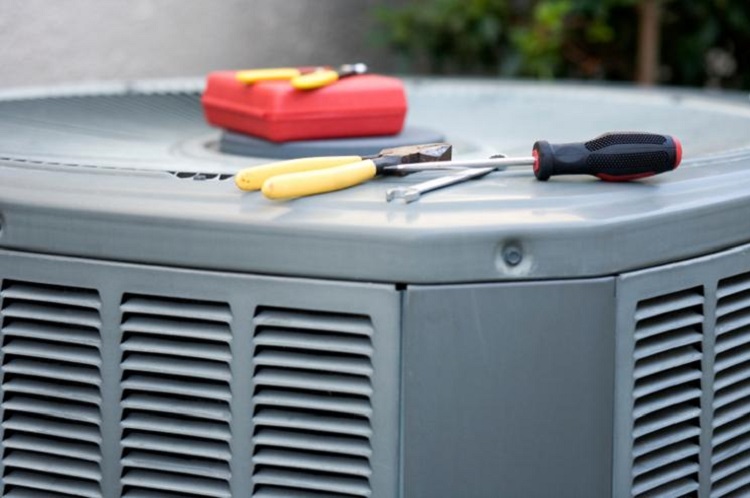
One of the best ways to save money around your home is to perform some types of repairs and maintenance yourself. But some types of work are easier to do yourself than others. In this edition, we’ll help you learn how to prep an AC unit for summer and figure out whether you can do this work yourself, saving some money in the process.
Savings

If you can do the general maintenance work on your air conditioning unit yourself, you may be able to save anywhere from $75 to $150 for a service call.
Some companies will offer good deals on air conditioner “tune-up” services in early spring, so you may find this service at a special price of $50 to $75. But some shady repair services use this “tune-up” deal to convince you your AC unit needs repairs that it actually doesn’t need. Finding a trustworthy repair person who will be honest with you is more important than saving a few bucks with a special on a “tune-up” for your AC unit.
If you can only do some of the basic maintenance tips listed below, at least you’re going to make the unit more efficient, saving some money on your electrical bill this summer. And a clean air conditioning unit will have a longer lifespan too.
Time Required
Even if you’ve never worked on an air conditioning unit before, you should be able to complete this type of maintenance in a couple of hours. An AC unit that hasn’t had maintenance performed on it previously will take longer, as it will be dirtier. If you perform maintenance on it a couple of times per year though, the process may only take an hour as you’ll be familiar with the work and the unit will be cleaner.
Tools Required

Cleaning and maintaining an air conditioner requires some simple tools, but they do have to be the right size. The exact sizes and tools you’ll need depend on the types of screws used to secure the unit’s panels, both indoors and outdoors.
- Screwdriver with varying bits
- Socket wrench with varying sockets
- Putty knife (or butter knife)
- Insulation tape
- No-rinse coil cleaning spray
- Soft-bristled brush
- Level
- Garden hose with pressure nozzle
- Wet/dry vacuum
- Hedge clippers
Preparation
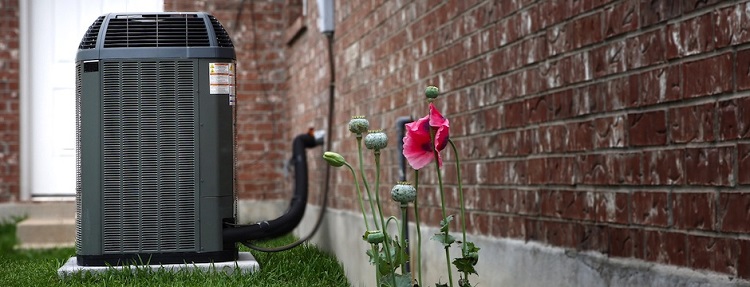
Pick a reasonable weather day to perform this work, as you’ll be outdoors. You don’t want to be working in really cold temperatures, as you’ll be using water.
Find the fuse for the air conditioning unit and turn it off at your electrical box. Sometimes an AC unit will have its own fuse box near the unit outdoors that you’ll need to turn off too.
Simple Maintenance Jobs
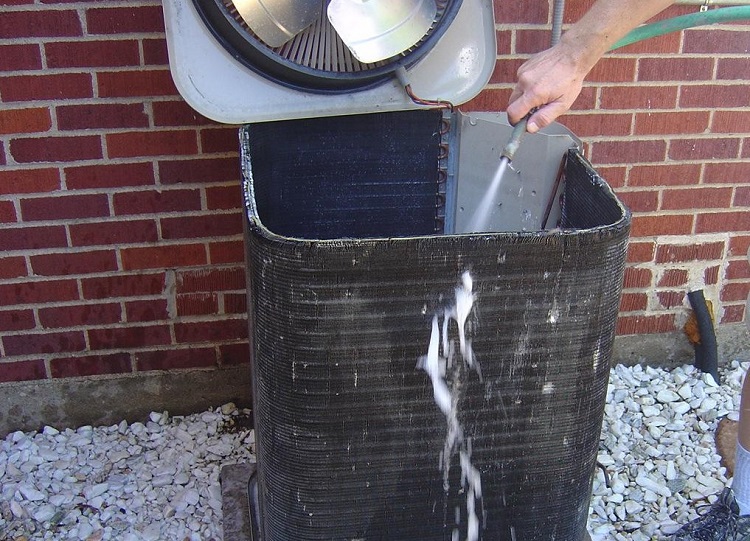
Here are some simple, specific tasks you can complete to perform maintenance and learn how to prep your AC unit for summer.
- Clean up: Outdoor air conditioning units will collect debris on their grates over time because of the way they draw and expel air. You’ll see leaves, twigs, seeds from trees (such as cottonwood), and even animal fur stuck on the various parts of an AC unit. Removing this debris will allow the unit to run more efficiently, as it can move air easier. A wet/dry vacuum may work well for cleaning the exterior grates if the debris is dry. You then may need to remove the grates to clean the unit’s metal fins properly. Most of the grates are attached with screws or hex screws.
- Washing with water: You also can use water to clean any debris from the metal fins on the AC unit. (These metal fins will look like a zig-zag pattern, and they’ll be tightly packed together.) It’ll work well to use a garden hose with a power nozzle to gain enough water pressure. If you can get inside the unit and spray toward the outside, you’ll be able to remove the debris easier. If you can only spray from the outside, the water may clump the debris together, pushing it toward the edge of the unit, where you can remove it by hand. If you have pets or trees in your area that produce seeds that fly through the air, you may want to wash the fins a few times during the summer.
- Straightening fins: Once the fins are cleaned, you may notice some are bent. You’ll want to straighten them to ensure they can work in the most efficient manner. They don’t have to be perfectly straight to work properly, but ensuring they aren’t touching each other will help. You can use a flat head screwdriver to straighten the fins. A small putty knife or even a sturdy butter knife with a thin blade will work too.
- Free space. Make sure vegetation and foreign objects are at least 24 inches from the unit. If you have plants near the AC unit, you’ll want to check this free space occasionally during the summer, so the air conditioner has enough room around it to draw and expel air properly.
Tougher Maintenance Jobs
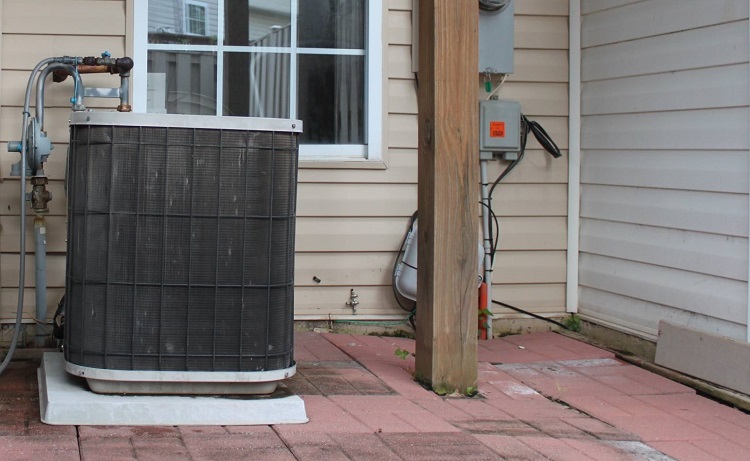
If you feel comfortable working around the air conditioning unit, you can perform a few other tasks that require a bit more know-how. But if you’re leery of these tasks, call in a trustworthy professional.
- Leveling. As an AC unit ages, it could slip out of a square alignment (such as the unit pictured above). Place a level onto the air conditioning unit, just to make sure it’s in alignment. Some air conditioners are braced with brackets against the home. Others rest on a platform on the ground. If the unit is not level, it could cause problems with the compressor over time. You can use shims to adjust the level of the unit as a temporary fix.
- Clean evaporator tube. Inside the home, you may have an evaporator coil inside the blower unit near the furnace. As moist, warm air inside the ducts strikes the coil, moisture from the air collects on the coil. It usually then drains through a flexible tube to a floor drain. This tube can become clogged with algae and mold over time. (Yes, that’s gross.) But you can clean this tube for a better performance level. Use a wet/dry vac to clean out this tube. Or if it’s especially clogged, consider swapping it out.
- Clean evaporator coil. The evaporator coil described above will collect dust over time. (You can minimize the dust by regularly changing your furnace filter.) If you feel comfortable working inside the unit, you can clean these coils. You’ll have to remove a panel from the unit that has screws or hex screws holding it in place. It also may have some insulation tape around it. Once you can see the coil, you can sweep it with a soft-bristled brush. Then finish cleaning it with a condenser coil spray that you can purchase in a hardware store. This special type of spray doesn’t require rinsing, so it’s great for this type of work.
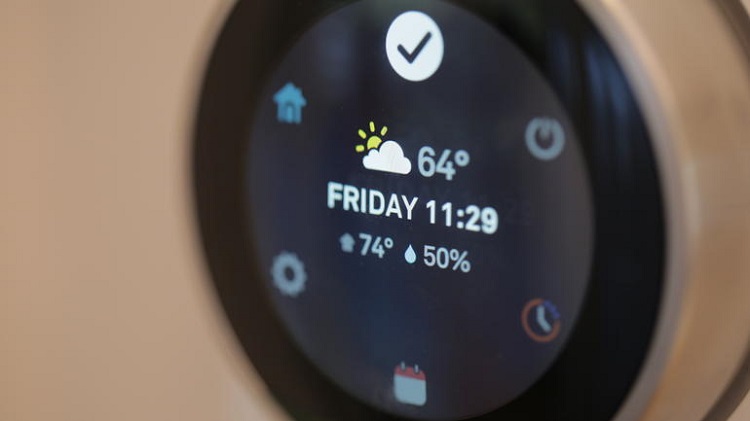
Some local power companies will provide rebates to consumers who install smart thermostats. So while you’re DIY-ing your air conditioner to save some money this summer, consider purchasing and installing a new thermostat.
The smart thermostat is able to connect to your home’s WiFi network, allowing you to adjust the settings via a smartphone app. Some units use motion sensors to determine when someone is home, adjusting the temperature setting accordingly. By running the AC unit more efficiently, the smart thermostat will save you money on your electrical bill over time.
You’ll have to contact your local utility to see whether it offers any rebates. To save a bit more, we at Ben’s Bargains have collected some deals on smart thermostats for you. We’ll discuss the steps involved in installing a smart thermostat in a few weeks in a similar article.
Final Tips
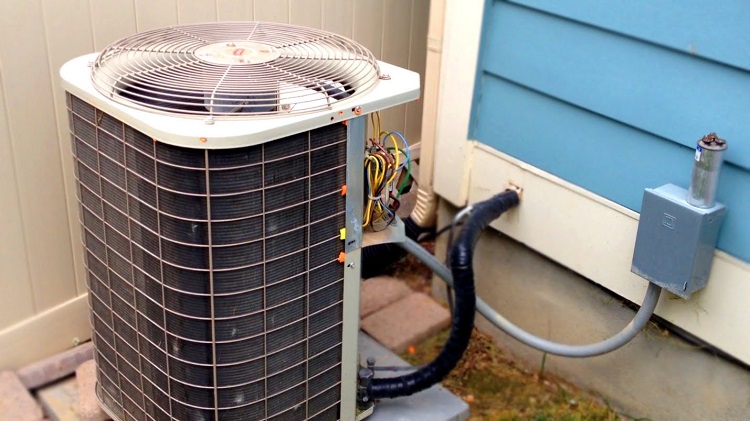
Before you switch over from heating to air conditioning for the summer, be sure you’ve inspected both your interior and exterior units for any odd damage. If you can easily see the wires, inspect them for any cracking. If you suspect anything out of the ordinary, call a professional.
Outdoors, look for nests that mice may have created. This is a potential problem if you covered the unit all winter, creating a habitat protected from the weather. Or look for any cracks in any portion of the unit where water may have penetrated and frozen, causing a crack.
Indoors, make sure to change all filters. Inspect the unit for any corrosion or cracks. This would be rare, but it could happen with an older unit if water was building up in the area.
Certainly, if you see any cracks or damage, it’s time to call in a professional. But if the all of the components look good, and if you’re able to complete the maintenance tasks described above yourself, your air conditioner will now be ready to run at full throttle for the summer (as long as you remember to turn the power back on at the fuse box). Plus, you’ll have saved some money in the process!













cubancheapskate
March 13, 2017 at 9:30 am
Thanks for the useful article!